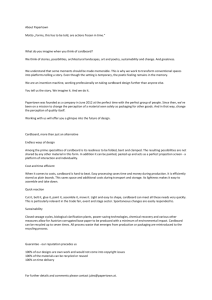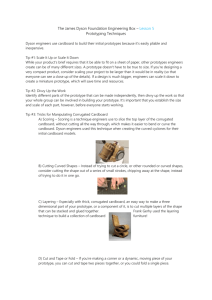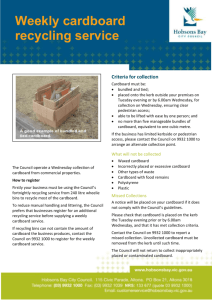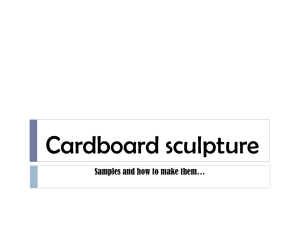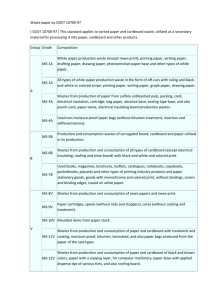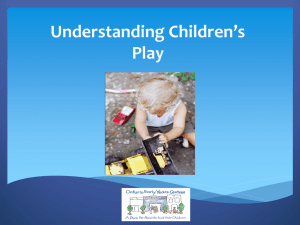the design your own room lesson plan.
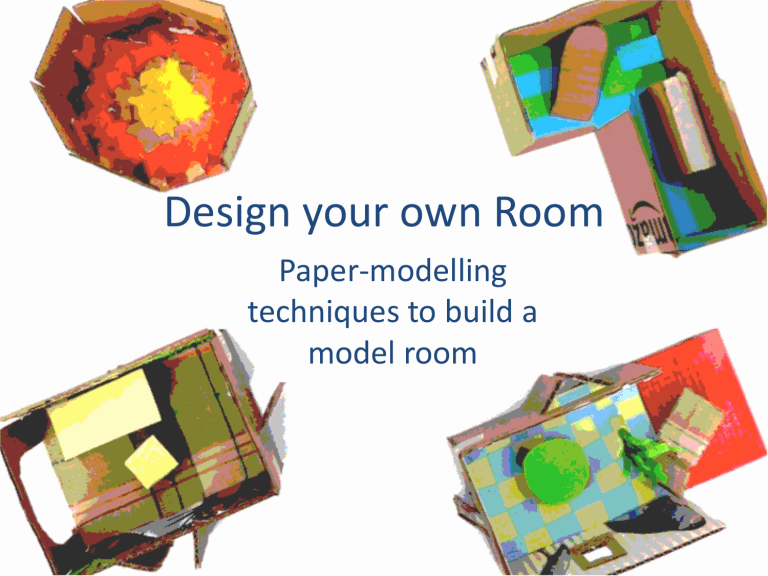
Design your own Room
Paper-modelling techniques to build a model room
cardboard models can help us to plan and design they allow us to see a design in 3D before it is built using expensive materials
I used a cardboard model to experiment with shapes & angles before carving them into wood
this cardboard model was painted before assembly can you see the rectangular
& triangular boxes used to make the buildings?
Recognise this place?
This is your mine for free building materials!
I bet there’s one near you
tools you need scissors ruler pen or pencil masking tape drawing square
let’s make a rectangular room
draw a floor plan leave space for the walls
scoring makes clean folds score folds between floor & walls
cut out corners you don’t need
fold up the walls you’ve made a box
what other shapes could you make?
what does your room look like?
draw it!
windows?
doors?
what shape is it?
draw windows
& doors onto your walls
score edges to be hinged
open up the doors!
decorate your room
magazines cloth coloured paper what else could you use?
what animal can you see in this room?
who lives here?
living inside a flower?
make your models sturdier by gluing on corner pieces
build furniture for your room can you see how I built these chairs?
could you build this one?
2.
1.
3.
remember to score edges to be folded
build a table
1.
2.
cut slots to insert a cross bar
3.
ready to move in?
what else could you build?
Slide 1
Overview-
This tutorial shows how your pupils can make models of rooms of their own design. It introduces some basic paper-modelling techniques, in particular scoring edges to achieve accurate folds, as well as designing a 3D shape in 2D.
Age group-
8+ for younger age groups, stick with the simple rectangular box shape before trying out more complex shapes.
Materials and Tools-
• Cardboard boxes (supermarket) – the bigger the better as they give large unfolded surfaces to work with
• Masking Tape
• Pva or Pritt stick
• Old magazines
• Paper of various colours
• Old pieces of cloth
• Whatever else the children might like to use to decorate their rooms
Health and Safety-
Check that the cardboard boxes are free of staples
The standard precautions apply for using glue and scissors.
When using the scissors to score folding edges, it has to be held by the blade – mask the holding blade off to make this easier.
Alternatively, use breakfast knives or knitting needles for scoring.
What will the students learn?
How to plan out a 3D shape in 2D and construct it
How to achieve neat folds by scoring edges
How will it tie in with the Curriculum?
It primarily covers the construction and drawing strands of the Visual Arts curriculum, but can easily include paint and colour, fabric and fibre (using cloths and textiles for decoration) and clay ( make little figures to inhabit the rooms). One could tie in the study of a famous architect or designer.
• History: how have people lived through the ages? (caves, castles, wigwams, houses…..)
• Geography: how do people live in other countries? ( skyscrapers, log cabins, igloos, stone houses, yurts)
• Mathematics: polygons ( integrate these into the floor plan shapes), designing 3D shapes in 2D, measuring accurately, marking 90 degree angles.
• English: talk and write about the way we like to live. What does the way we choose to live say about us?
How long will it take?
Preparation: collecting cardboard boxes ( maybe the children can bring them in)
Drawing and building a box to desired shape and cutting in doors and windows 30-40 minutes
Decorating the interior of the room using a variety of materials 40min
Building furniture 20 minutes
What next?
The techniques learned can be applied to build more complex structures
For example: labyrinths, pyramids, the tower of Pisa, the Eiffel Tower, houses in the local town….
Slide 2
Discuss the advantages of using cardboard to make models (cheap, recycled, light, easy to cut and fold etc).
Have you ever built something out of cardboard before?
Slide 3
This slide highlights the whole idea of how cardboard models can be used in the experimental design stage of a project.
Once the woodworker starts carving, he/she has to be clear about the design – making the cardboard model takes a lot less time and effort than carving, and allows the woodworker to try out changes before beginning for “real”.
Slide 4
Can the pupils identify the various “core 3D shapes” used to represent the buildings? – rectangular and triangular boxes – the shape of the georgian roof – the triangular roof making a corner. If you had to draw out the chimneys, what would they look like?
Slide 5
Most supermarkets give away cardboard boxes. Choose large boxes – these offer large unfolded surfaces, allowing the children to create structures as big as they want.
Remove any staples, as these could injure.
Slide 6
The first part of the activity is all about constructing using cardboard.
Provide plenty of cardboard to allow for experimentation.
Slide 7
This first part of the tutorial shows the technique used to create a simple rectangular room – once this is understood it can easily be adapted for more complex designs. Remember that the walls will be folded up into a vertical postion – so leave enough space for them all around the floorplan.
Slide 8
Scoring edges to be folded is the key skill to be learned – it makes the folds neat and accurate.
If holding the scissors as shown is uncomfortable, try wrapping masking tape around it.
Slide 10
At this point the walls can be held in place using masking tape – but to open windows and doors and decorate, the box should be opened out again.
Slide 11
The key to making new shapes lies in the design of the floor plan – once the shape of the floor plan is decided, the walls can be drawn around it.
This activity could tie in very well with polygons in Mathematics.
At this stage, the boxes are held together temporarily with masking tape, as the interior decoration is a lot easier when they are opened out.
Slide 12
Discuss various room designs. In what way do rooms differ at home?
What do we like to do in our own private room?
Do we like large windows, or a cosy cave?
What kind of colours do we like – bright and colourful, or calm and comforting?
Slide 13
For the purpose of clarity, the slides show very basic ideas on the rectangular shaped room. Discuss the concept of relative scale – how big is the person who lives in this room and how big do the doors and windows have to be?
Slide 15
To cut open windows and doors, score the edges repeatedly until cut through ( lay another piece of cardboard underneath to protect table). Avoid cutting through the cardboard by poking scissors through – it’s much safer to lay it flat and cut using the scoring method.
Slide 16
Discuss what could be used to represent the various materials such as tiles, carpet, glass, wallpaper.
What could the children find to personalise their rooms?
Slide 17
What does my room say about me?
What do I want to live with?
Slide 21
For furniture, it is more suitable to use thinner cardboard – easier to bend and make slots.
Slide 24
Display the rooms and encourage the children to “visit” each other’s rooms.
Take turns to describe the owner of a room using only their interior decoration as a guide – eg I think this person likes birds and nature
– he/she likes to lie on her bed and listen to birdsong etc
Slide 25
To bring claywork into the project, the pupils could now make clay figures to inhabit their rooms.
Slide 26
What else could you make using these construction techniques?
